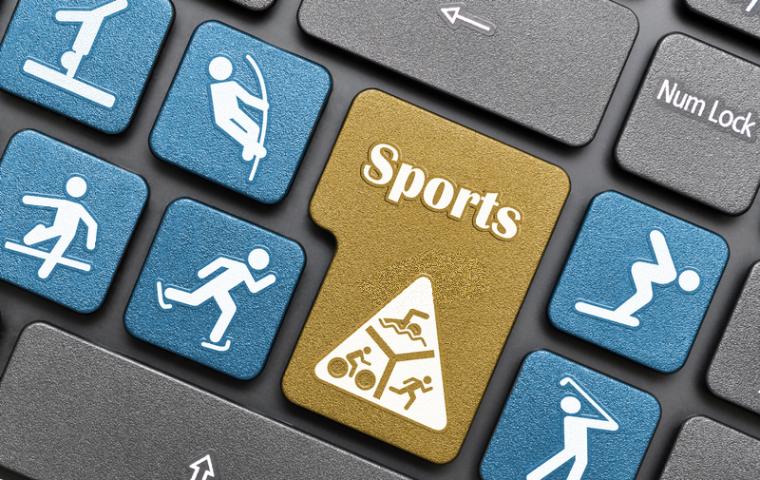
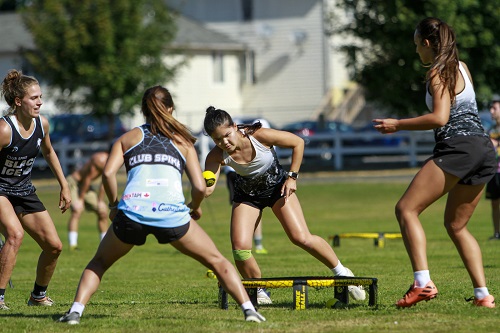
Headlines in SDM’s news seem to share a certain theme lately...
- Spikeball National Tour Comes to Monroe, Washington.
- Spikeball Tournament Series to Debut in Erie This Weekend.
- State Games of Michigan Announce Addition of Spikeball to Lineup.
Spikeball, apparently, is popping up everywhere, including ESPN, and pretty much on every playing surface.
But honestly. What is it? And why is it making such much headway? And what role is it playing in the bounceback from 2020?
First, the facts. Spikeball is a team sport played by two teams of two players who face one another across a round net that resembles a mini-trampoline. The object of the game is to hit a ball into the net so that the opposing team cannot return it. A team is allowed up to three touches to return the ball. The rally continues until the ball is not returned properly. The first team to hit 21 points is the winner.
According to Spikeball.com, the sport’s official inventor/governing body/website of the Spikeball Roundnet Association, the sport is humorously referred to as the love child of volleyball and four square. The fact that it can be played in backyards, on the playground, in the gym, at the beach and probably any other location (cruise ships, tailgate parties, outdoor restaurant waiting areas, camps, etc.), is an enormous factor in its rise. Another is the overall ease for athletes – in obtaining equipment, in transporting that equipment, and of using the equipment to play –and it all makes for a sport poised for mad growth, particularly among the young demographic.
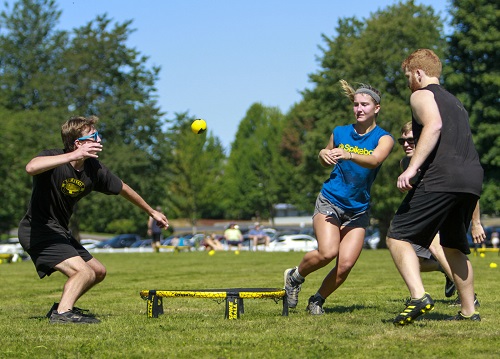
And like ink dropped into water, Spikeball is spreading. According to Esquire.com, it can be found “in P.E. classes, youth ministries, Ultimate groups, and even non-lame places like college campuses. Clubs have cropped up at Ohio State University, Harvard University, and the University of Alabama. Even the SEC, an unbudging football stomping ground, is buying in.”
The biggest growth sector by far, says Nora White, senior sports development manager with the Spikeball Roundnet Association, is the college crowd. And it's that group that is driving the market.
"We have outrageous growth on campus," says White. "I was on the phone with a college club president who told me he had 425 students signed up to play. And at Ohio State alone, they had 800 kids signed up and were able to put on a 60-team tournament. And that's just at Ohio State; 60 teams is what we'd normally get an event held across 12 schools."
Headquartered in Chicago, Spikeball says it now has more than 4 million players worldwide. Oh, and that includes the Plain People.
"The Amish and Mennonite community are really into volleyball, so a lot of that population really caught on," Becca Graham, one of the top national players told reporters at ESPN after competing in a tournament in Lancaster. "And this is just a great place. There are tons of parks to play in, and the weather's pretty good year-round. We have a couple hundred people as part of our Facebook group. Any given day you might have 20-plus people playing pickup in a park somewhere."
And it’s becoming a force in sports tourism. In fact, the event side of the website lists the 2021 season, and that culminates in the National Championship October 2 and 3 at the Proving Grounds in Conshohocken, Pennsylvania.
And all that is helping cities tap into a new revenue stream – at a most opportune time.
Additionally, notes Esquire, it’s not just that the sport has grown legs; it’s that the owner is actually doing the legwork. At USASpikeball.com, teams can register and enter tournaments. There are regional and national events held all across the country. Chris Ruder, the founder and CEO of Spikeball Inc., has been known to pop in and host raging after-parties, throwing down credit cards at local bars and inviting all the players to celebrate the sport.
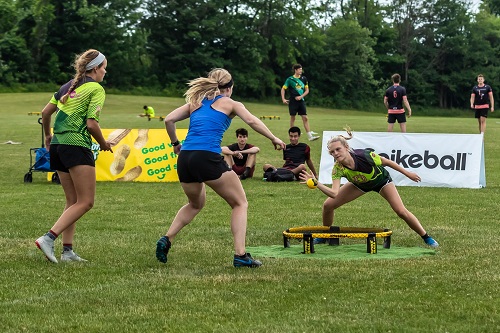
"We did that in New York," he says. "Basically measured it in kegs."
Side note: Well, that’s one way of calculating economic impact.
In late July, Spikeball came to the Snohomish area, bringing with it not only teams but hopes for growth – and return business.
The tournament attracted 100 teams competing in all divisions; in fact, the largest division was Intermediate, with 36 teams. A total of 500 people attended the event (players and spectators). The tournament had an economic impact of $82,015 (pretty impressive for an event that requires no specific sports facility and whose visibility and fun factor lend themselves to great growth potential).
“We have seen Spikeball increase in popularity in the Puget Sound Region over the last couple of years. The opportunity to host a Spikeball National Tour Series was very exciting for us.” stated Tammy Dunn, executive director of Snohomish County Sports Commission. “To have 100 teams compete in this first-time event showcases that there is a demand for future Spikeball tournaments. We look forward to 2022.”
Earlier in the summer, the Spikeball Grand Slam came to Erie, Pennsylvania, with more than 200 athletes in attendance over the two-day event.
“We’ve seen the emergence of Spikeball in Erie recently at our parks and local gatherings," noted Ben Huggler, event services director for the Erie Sports Commission. "When we had the opportunity to welcome a Grand Slam event to ERIEBANK Sports Park we knew it would be a great way to embrace the fastest growing sport among millennials.”
Spikeball has also been added to multi-sport events, like the State Games of Michigan – and expect it to be added to corporate games sooner rather than later.
Part of the reason for the growth may be the welcoming atmosphere. In Erie, the Tour Series Format included not only Contender and Premier/Pro divisions but Beginner, Youth, Intermediate and Women’s divisions and registration was open to all ages. The tournament in the PNW, meanwhile, attracted 100 teams competing in all divisions; in fact, the largest division was Intermediate, with 36 teams.
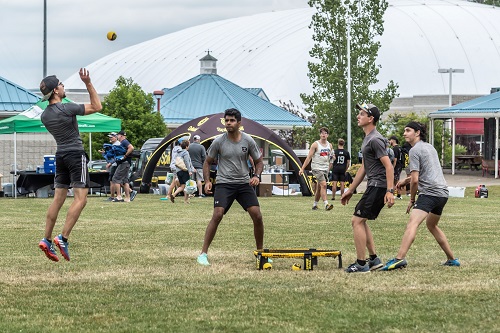
And who knows where all that growth can lead? The Daytona Beach News-Journal tapped it as a possible future Olympic sport, along with pickleball, noting, “If you’ve been on the beach, you’ve seen it. Generally, four young folks gather around a short table-top net, batting a ball off the net in a cross between volleyball and four-square. Remember, I said “young” folks, which is right in the IOC’s wheelhouse.”
Of course, they also picked beer pong.
But as the sport proliferates, expect to see it making continued inroads across the sports tourism spectrum and into the rec league market as well.SDM will continue to follow its growth.

